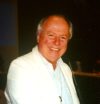Arthur Waley (19 Aug 1889 – 27 Jun 1966): Ways of Thought in Ancient China
BIOGRAPHIES, 17 Aug 2020
René Wadlow – TRANSCEND Media Service
Arthur Waley was an important cultural bridge-builder between China and the West. He was a translator of Chinese and Japanese poetry and philosophical texts, especially the Taoist classic Tao Te Ching attributed to Lao Tsu. (1)
Waley tried to place the works he translated into the historic and intellectual context in which they were written. In his translation of some of the texts of Mencius, he indicates some of the Taoist influences in Mencius’ thought. Mencius was influenced by the Taoism of Ch’i State where he lived at the time. Ch’i Taoism centered round the Art of the Mind – the unmoved mind as Mencius writes (meditation on the void) and tending of the Vital Spirit (control of breathing, techniques which we find today in Zen and yoga).
Later Confucian schools wanted to erase all traces of Taoism in Mencius so that Mencius would be only an expounder of the Confucian tradition. Much of Mencius centers on the practice of goodness (jen) and his advice to the rules of the states where he lived on such practical matters as land ownership, market taxes, and public support for schools. (2)
It is for his commentaries on the Tao Te Ching that Waley is best known. The book itself, being short, has been much translated. However, it is an oculist’s kaleidoscope containing many different elements of a political, philosophical, alchemical and physiological nature. Lao Tsu is concerned with political philosophy and the book is addressed to the sage ruler. One version of the creation of the book is that Lao Tsu was to go beyond the walls of the state where he had been a public servant. The gatekeeper asked him to write down his advice on the Tao and its potential.
Lao Tsu wrote the book during one night and the next morning went through the gate never to return. A more critical analysis of the book leads to a belief that there are several authors, bringing together a common stock of ideas and practices such as trance techniques used by Chinese shamen, an early mention of yin/yang which is more fully developed later by Taoist dualist as well as some sexual techniques later more fully developed by tantric practices coming from Bengal via Tibet. For Lao Tsu, the Tao is the unchanging unity underlying a shifting plurality and at the same time the impetus giving rise to every form of life.
As there is increasing contact and thus a need for understanding between China and the West, we can appreciate the work of persons such as Arthur Waley who opened doors to ancient Chinese thought and Chinese high culture?
Notes:
(1) Arthur Waley.The Way and its Power. A Study of the Tao Te Ching and its Place in Chinese Thought (New York: Grove Press, 1958) original edition 1934
(2) Arthur Waley. Three Ways of Thought in Ancient China (New York: Doubleday, 1955) original edition 1939
______________________________________
 René Wadlow is a member of the TRANSCEND Network for Peace Development Environment. He is President of the Association of World Citizens, an international peace organization with consultative status with ECOSOC, the United Nations organ facilitating international cooperation and problem-solving in economic and social issues, and editor of Transnational Perspectives.
René Wadlow is a member of the TRANSCEND Network for Peace Development Environment. He is President of the Association of World Citizens, an international peace organization with consultative status with ECOSOC, the United Nations organ facilitating international cooperation and problem-solving in economic and social issues, and editor of Transnational Perspectives.
Tags: Biography
This article originally appeared on Transcend Media Service (TMS) on 17 Aug 2020.
Anticopyright: Editorials and articles originated on TMS may be freely reprinted, disseminated, translated and used as background material, provided an acknowledgement and link to the source, TMS: Arthur Waley (19 Aug 1889 – 27 Jun 1966): Ways of Thought in Ancient China, is included. Thank you.
If you enjoyed this article, please donate to TMS to join the growing list of TMS Supporters.

This work is licensed under a CC BY-NC 4.0 License.
